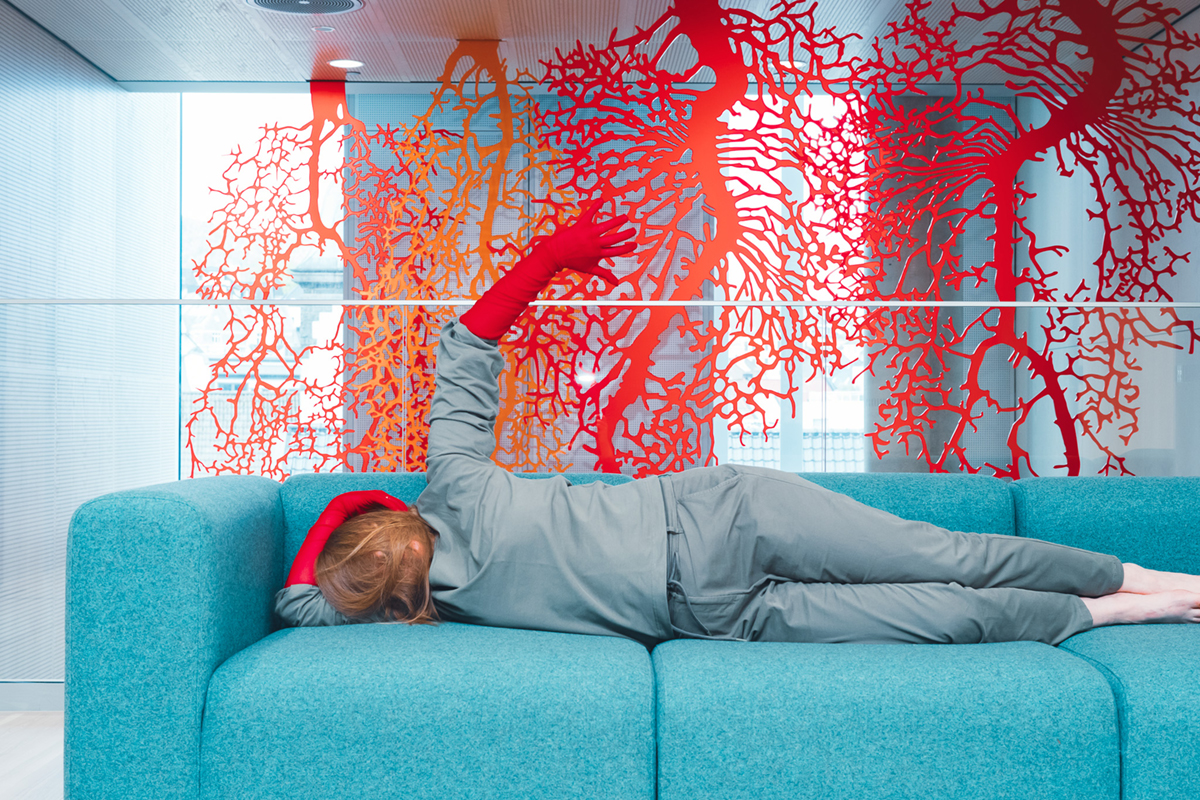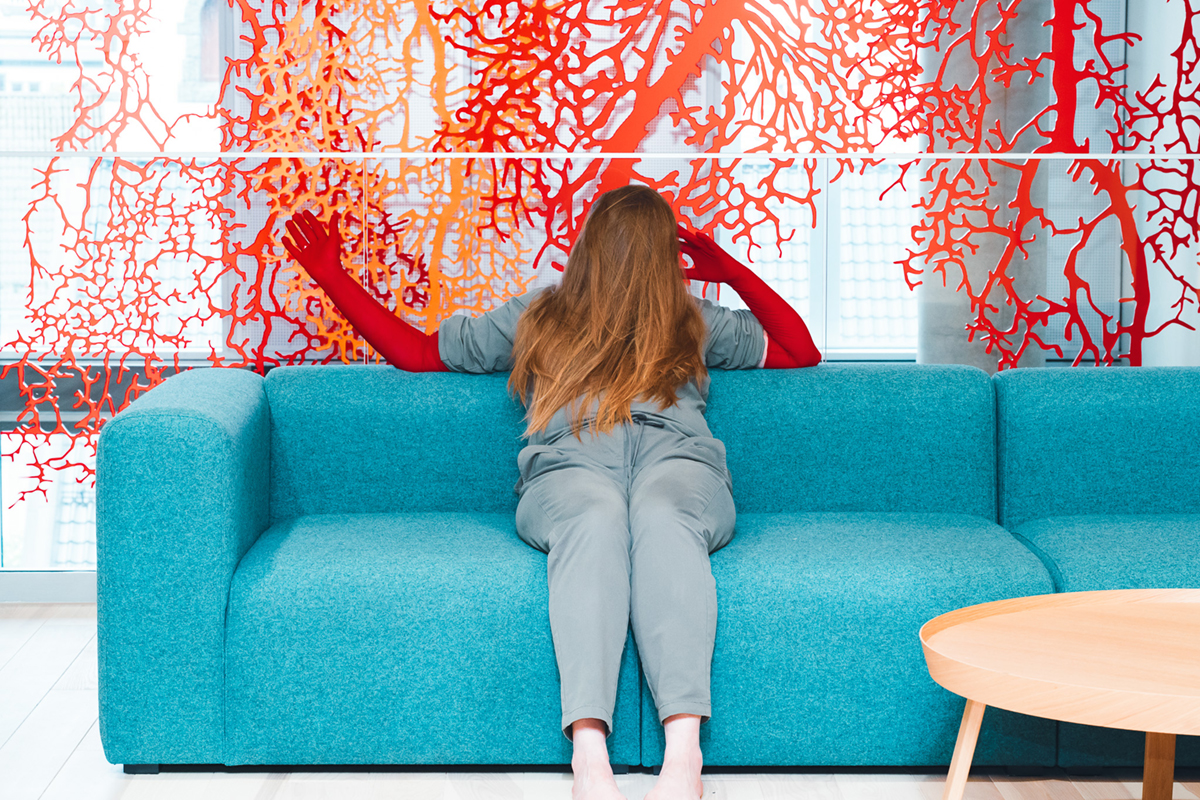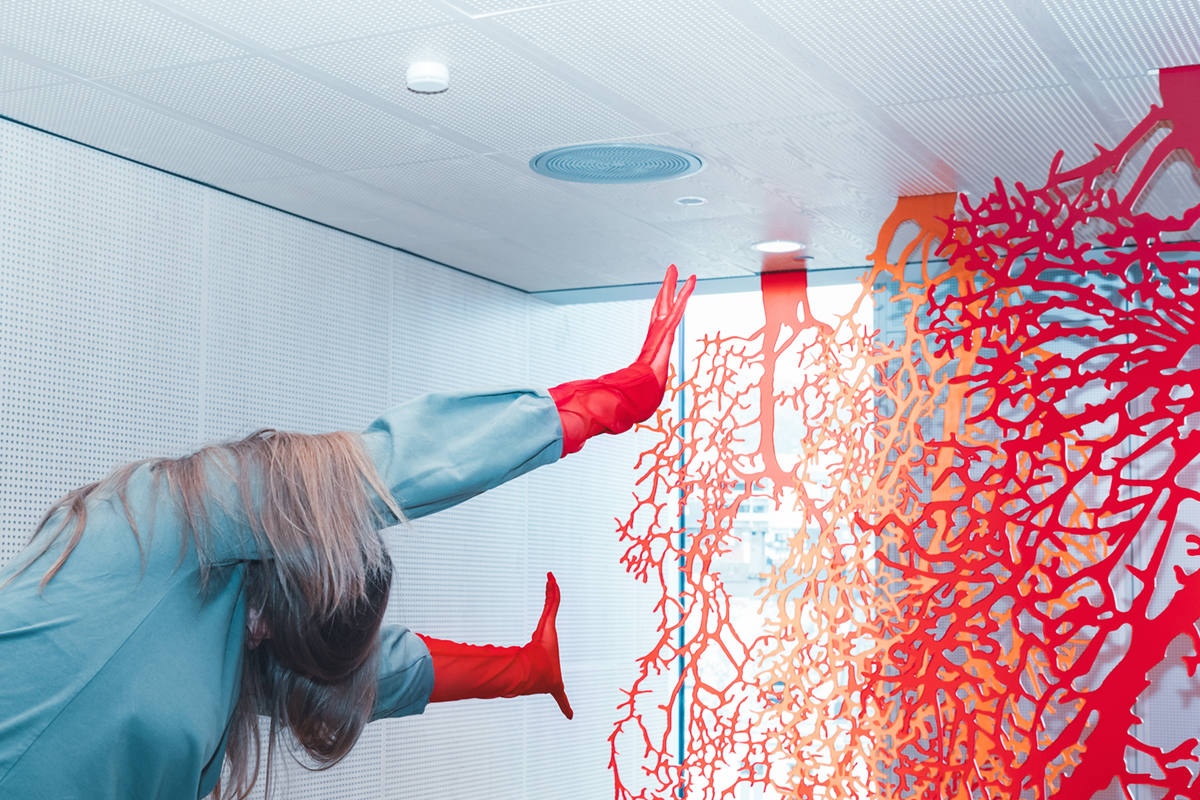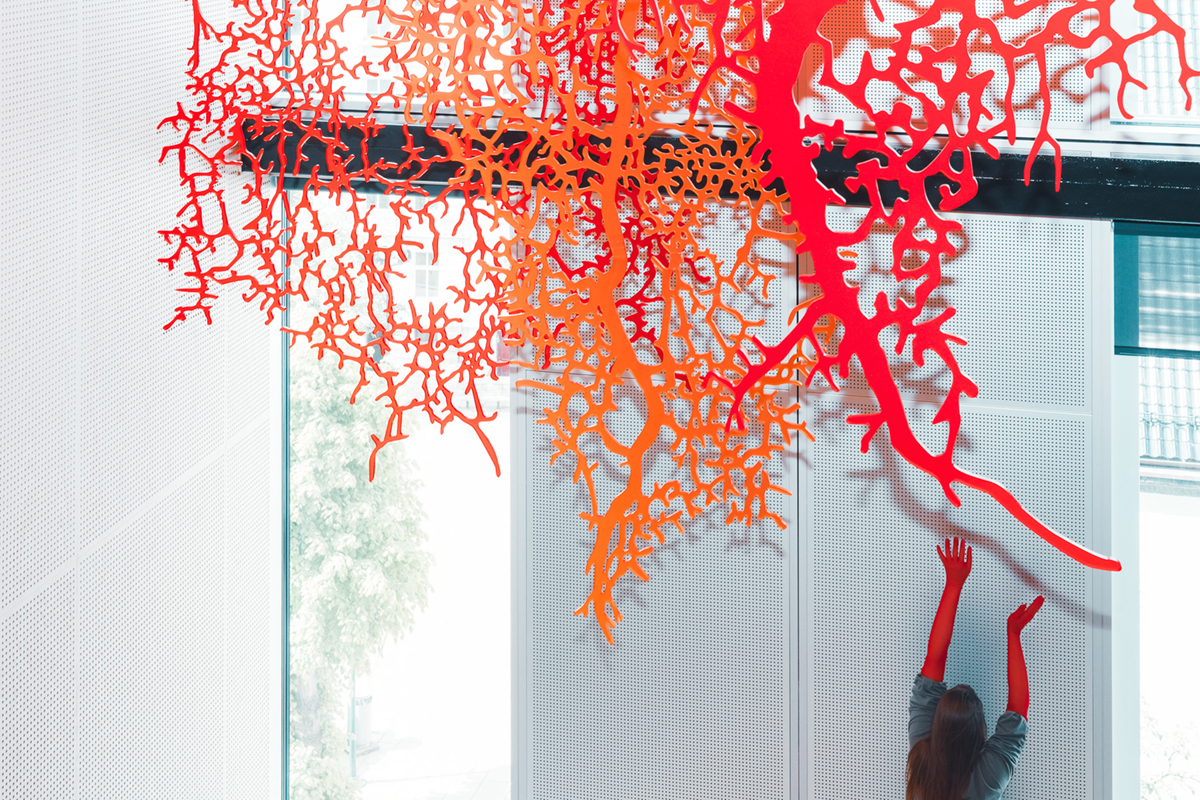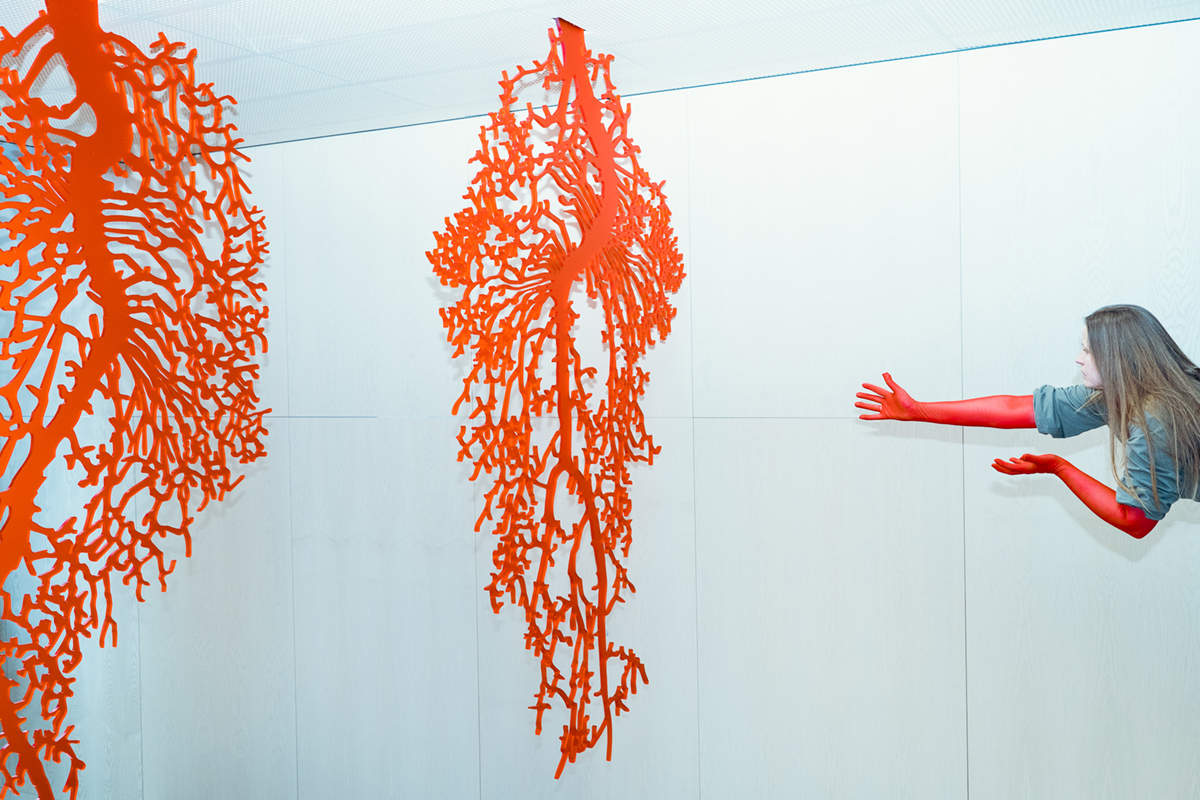May 2023
County Hall (Fylkeshuset), installation in the foajé of the County Hall Room, the 5th floor, Bergen, Norway.
Art Consultant: Ståle Sørensen, Marina Venendaal.
Permanent project.
Technique: Acrylic glass, CNC technology.
Dimensions: Four sculptures
3800 x 2000 x 15 mm
3800 x 1300 x 15 mm
3000 x 2000 x 15 mm
3000 x 2000 x 15 mm
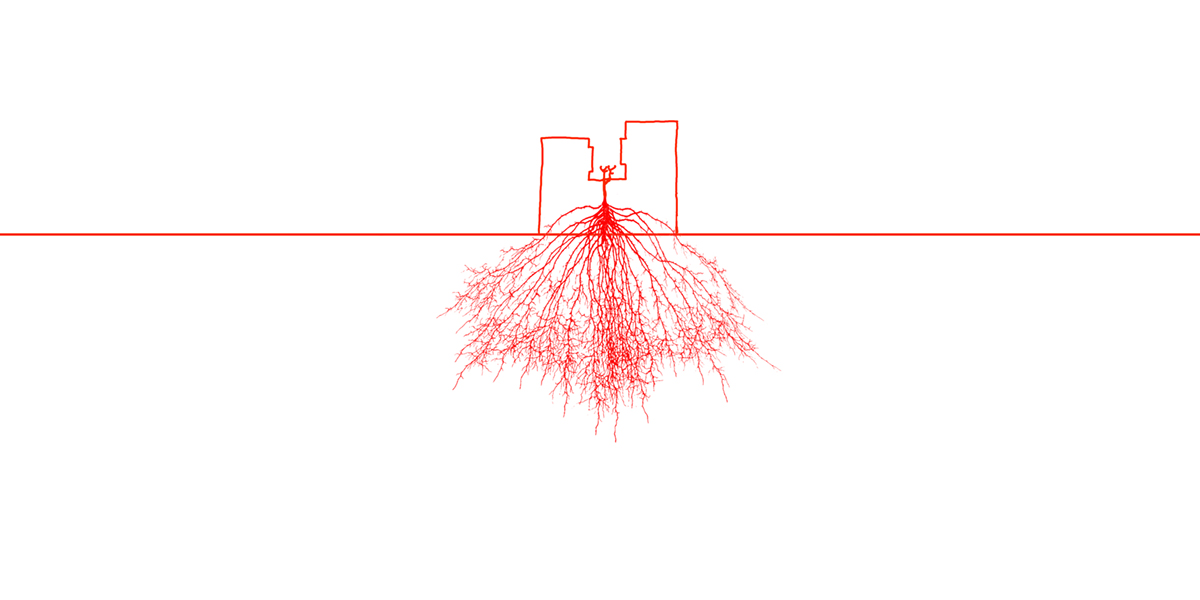
Drawing credit: Izabela Zolcinska
The Red Roots (Rødtene)
The installation consists of four sculptures hanging from the ceiling, “growing downward” through the foyer of the County Hall.
The sculptures reference a plant found in nature. They are a "portrait" of the Meum (Bjørnerot) plant (Meum athamanticum), an ancient monastery herb that likely came to Norway with monks in the 1200s.
Meum (Bjørnerot) is little known today, though it can occasionally be found in old gardens and homesteads.
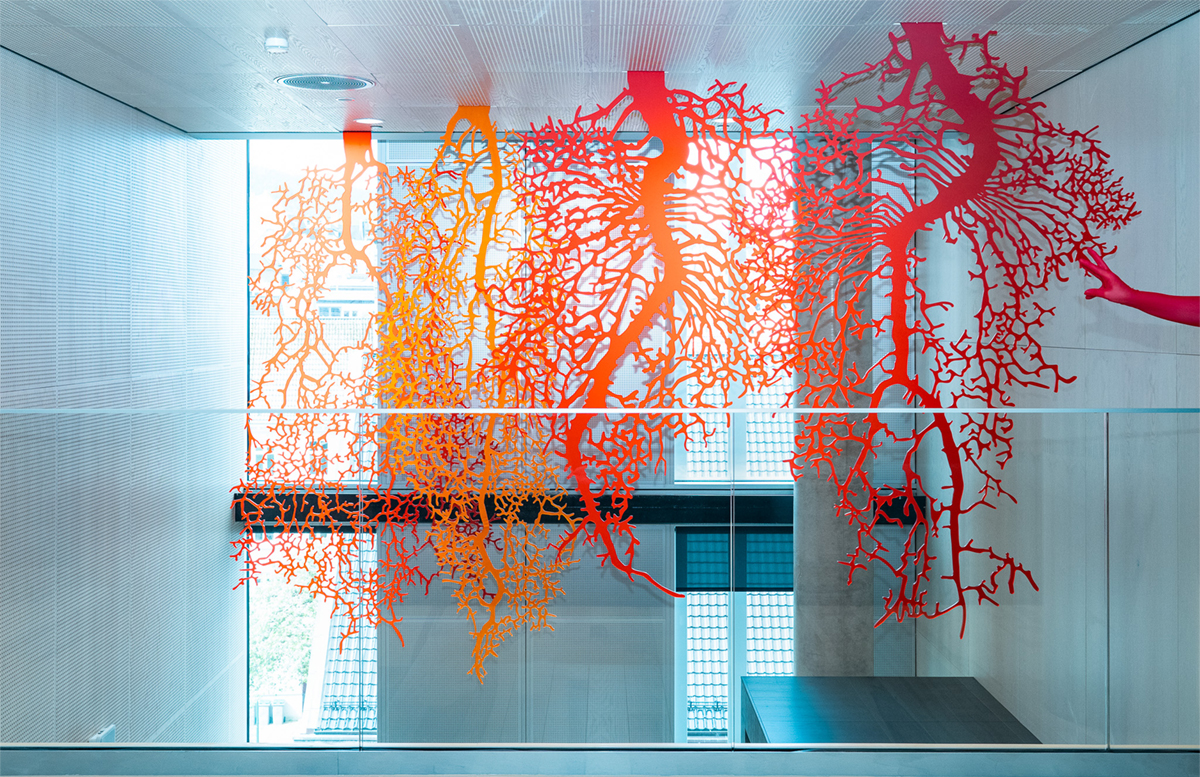
Photo credit: Runa Halleraker
The Red Roots (Rødtene) intends to create an aesthetic and scientific impact by communicating nature-inspired solutions.
The inspiration for the project is rooted in the fifth façade of the new County Hall (Fylkeshuset).
The plants on the rooftop terrace symbolically reflect the nature of Western Norway.
I imagine the space between the towers is "waiting" for the trees to gradually fill the void between them and anchor the County Hall into Vestland County.
The roots of these plants serve as a conceptual reference.
This impression reminds me of observing a structured architectural organism interacting strongly with its ecosystem.
These reflections form the framework of my idea: The Red Roots (Rødtene).
My motivation is to open up the phenomenon of roots and give attention to this (hidden/underground) natural system, with architecture as an active collaborator.
I intend to emphasise the building’s function and form, refer to the verbs "participate," "include," and "collaborate," and, not least, visually communicate the idea of transparency and democracy.
Root systems have a universal instinct “to connect.” In 1880, Charles Darwin launched the root-brain hypothesis, arguing for a form of intelligence in plants.
He found that the tips of plant roots function in part like a brain. They move, communicate, and respond to external stimuli.
Together, all the root tips, according to Darwin, formed part of a larger, collective brain.
I see this as a metaphor for the roles of the county authority.
“Recent research shows that Darwin was right about the complexity of the root tip. It can sense its surroundings.
It grows away from light, finds the optimal place to absorb water and nutrients, and avoids competition.
Roots can detect obstacles before encountering them, suggesting they can ‘see’ their environment. Plants have more than 20 senses.
Some of these correspond to our own, but they can also sense more complex influences, such as electromagnetic fields and infrared radiation.
With research comes knowledge, and if plant complexity turns out to be more advanced than previously thought, shouldn't our view of and stewardship of nature change as well?”*
Observing the root systems in nature leads to the concept of biomimicry, which offers hope for more sustainable solutions and culture.
I want the installation to convey this knowledge to a broader audience.
*Translated from: Aftenposten, Jeanette Viken “Trær og planter snakker med hverandre gjennom et stort nettverk av kanaler”.
A stage action, "The Thinking-hands" 2023, documented by Runa Halleraker.
